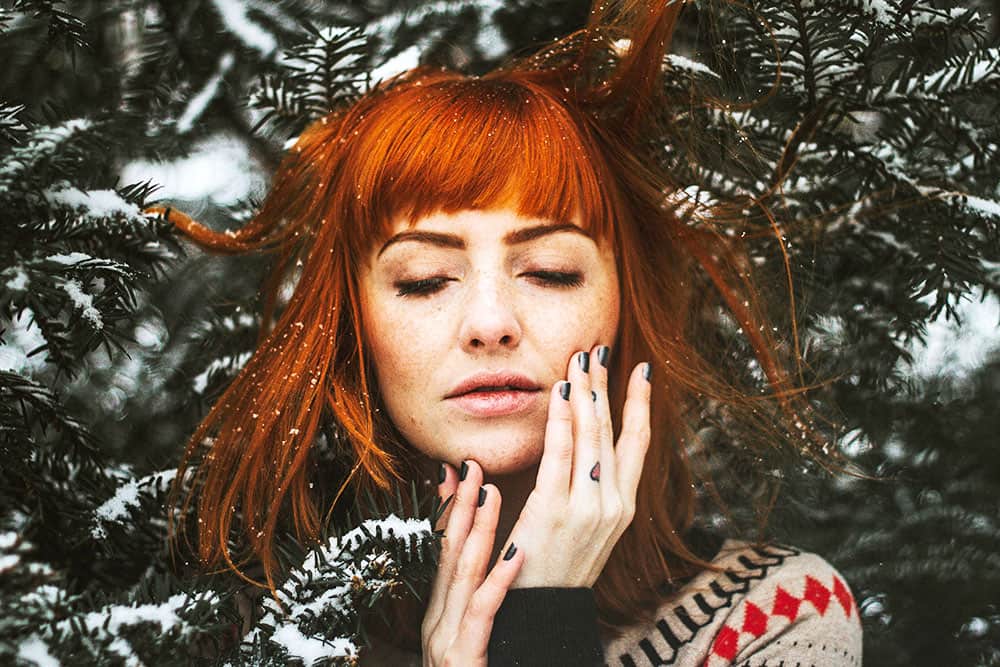
Winter Sun Safety
It’s easy to associate stringent skin protection with the spring and summer months, and also winter holidays in the sun. With temperatures plummeting, winter in the U.K. firmly here, fewer hours of daylight and overcast days, it is still vital to employ vigilant sun protection, regardless of the weather or time of the year.
Even on the coldest of days the UV rays that cause skin ageing and skin cancer are reaching your skin. In the right conditions you can sustain skin damage just as easily as in the summer sun. Additionally, skin cancer detection rates are lower during the winter months, as people pile on the layers for colder weather, and neglect their essential skin health checks.
UVB rays, which are the main cause of sunburn, are the strongest in summer, however, UVB rays can burn your skin all year round. This is more prevalent at higher altitudes and on reflective surfaces such as snow and ice. Snow reflects up to 80 per cent of the sun’s UV light, which means that the harmful rays hit you twice, increasing the risks of skin cancer and premature ageing.
UVA rays are constant all year round, and can penetrate through clouds and fog. They can also penetrate glass resulting in possible skin damage while staying indoors on a bright winter day. Some studies have noted that UVA has an 80 per cent risk of causing premature ageing. UVA causes age spots, and destroy collagen which leads to skin sagging.
Unlike UVB rays, which cause sunburn, UVA rays penetrate deeper into the skin, causing invisible damage. The feeling of being burned by the sun is not present with UVA, and the side effects are slow acting, resulting in being unaware of the damage that is being done.
UVA makes up 95 per cent of the sun’s rays, making it all the more vital to protect against it in winter. It can, and will, create mutations in the DNA that can lead to aggressive basal and squamous cell carcinoma skin cancers.
The first line of defence in winter is clothing, not only as protection from the cold. Do not forget to adequately protect the face, head, and neck all year round, as this is where most skin cancers occur. UV-blocking glasses and a wide-brimmed hat are advised before heading out in to the sun. Sunglasses or ski goggles protect your eyes from snow glare, and a hat will protect your scalp, while keeping your head warm.
Apply a broad spectrum sunscreen to protect against both UVA and UVB rays, with a bare minimum of SPF-30 or higher repeatedly to all exposed skin throughout the day, ensuring that often missed spots, such as tops of ears, the hairline, and around the eyes. A moisturising sunscreen with ingredients such as lanolin or glycerin will also help combat dry winter skin.
No matter your location, also choosing a waterproof sunscreen is advisable, for the rain in England, snow while skiing, or the sea on sunny holidays. A lip balm with an SPF-30 will protect your lips, especially the lower lip, which is vulnerable to the sun’s rays. Avoid the sun when it is at its strongest, typically between 11am and 3pm.
Do not visit tanning booths to work on a ‘base tan’ before heading off to sunny winter holidays, as this exposure does not protect you from the harmful UVB rays, and it will actually increase the risk of skin cancers and premature ageing. There is a 20 per cent increase in melanoma with exposure to UV radiation from indoor tanning. Remember, there is no such thing as healthy tanning.
Certain creams and medications, for example retinol products and chemical peels can make the skin more photosensitive. Tetracycline-based antibiotics, including those used for acne treatment can increase the skin’s sensitivity to sunlight.
While paler skin is a factor in sun sensitivity, even those with darker skin can get damage from harmful rays. They might not suffer the effects as quickly due to having natural protection, but that certainly does not mean they cannot get skin cancer.
The sooner a skin cancer is detected, identified and treated, the better the chance of avoiding surgery or, in the case of melanoma or other skin cancers, potential disfigurement or even death. It is important to know your skin, develop a regular routine of checking your skin for any changes to existing moles or freckles.
Make sure you check your entire body as skin cancers can occur on parts of the body not exposed to the sun, such as the soles of the feet, between fingers and toes and under nails. Undress completely and make sure you have good light. Use a mirror to check hard to see areas such as the back and scalp.
It is important to consult a doctor or dermatologist immediately if any abnormal changes are discovered, and never ignore any of the warning signs such as the change in colour or shape of existing spots, raised, firm to the touch, bleeding or crusty moles. If left untreated, they can spread to other areas of the body.
It is not suggested that the darker winter months be spent in hibernation away from daylight entirely. The body requires vitamin D, of which sunlight is an excellent source. It is essential for a healthy body, teeth, and bones, and helps fight depression.
Staying safe, and protected from harmful sunlight is vital all year round, whatever the weather, and whatever the season, and not only yourself, but your family, and especially children. Keep covered, use high SPF factor sunscreen, and a little forward thinking will make sure you remain healthy and happy.